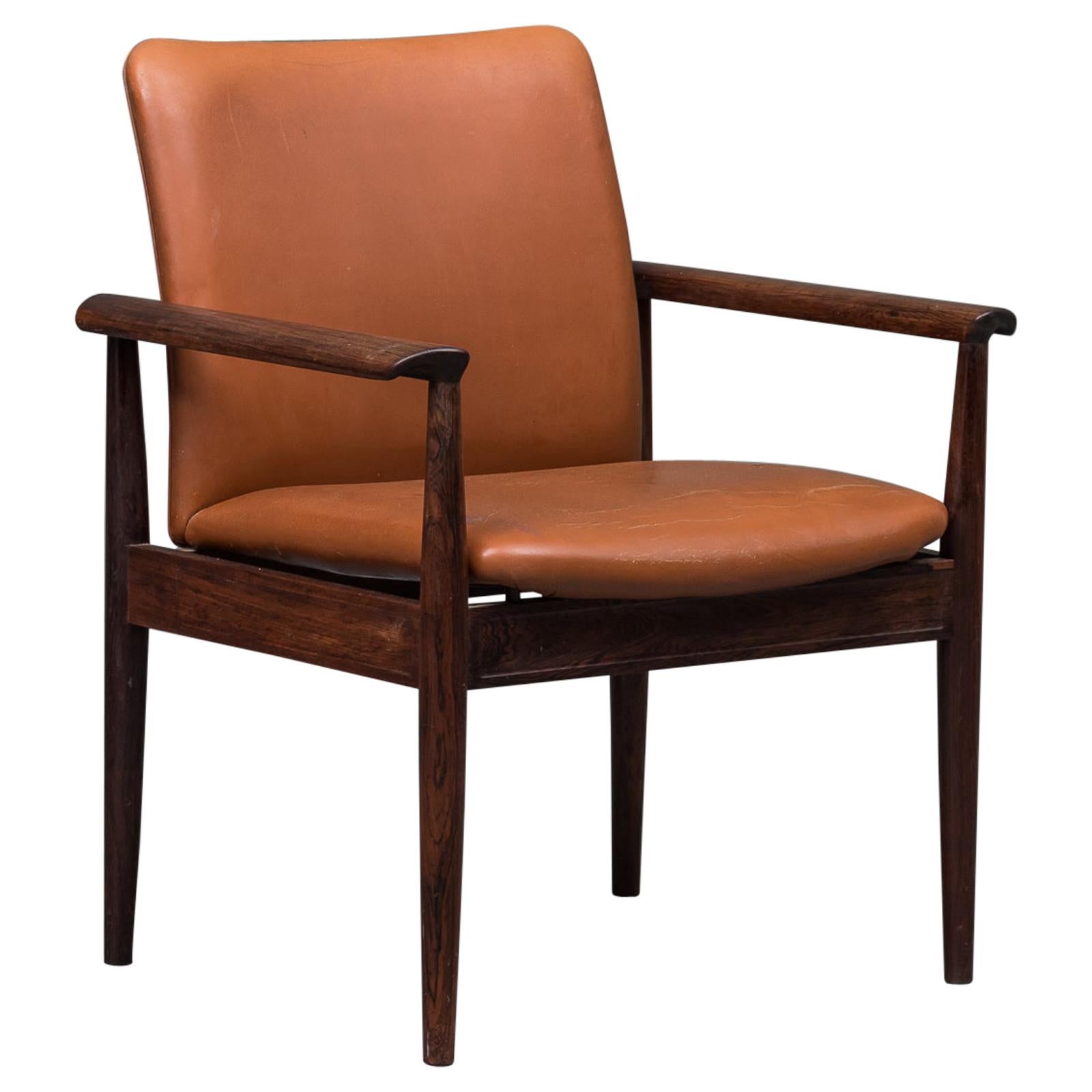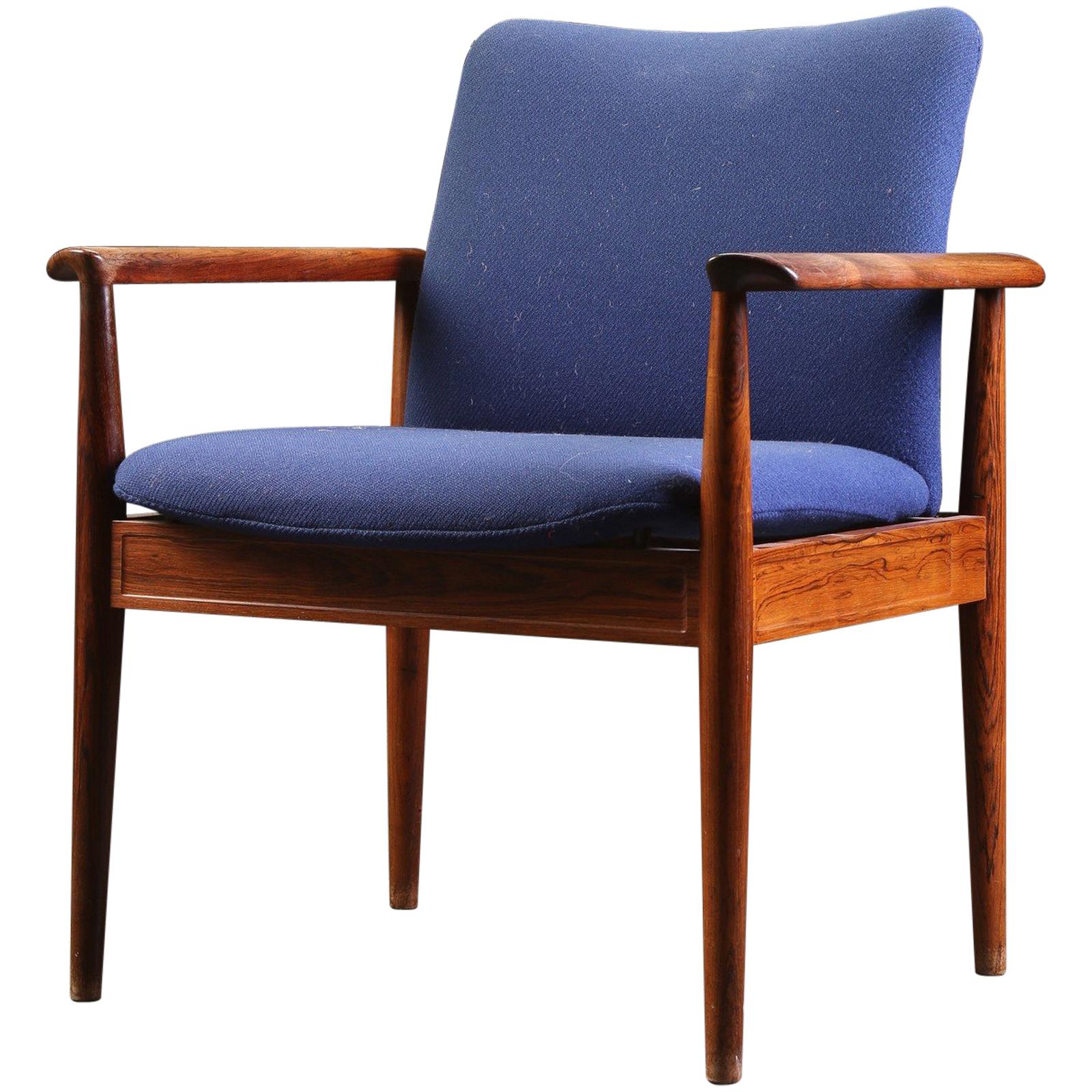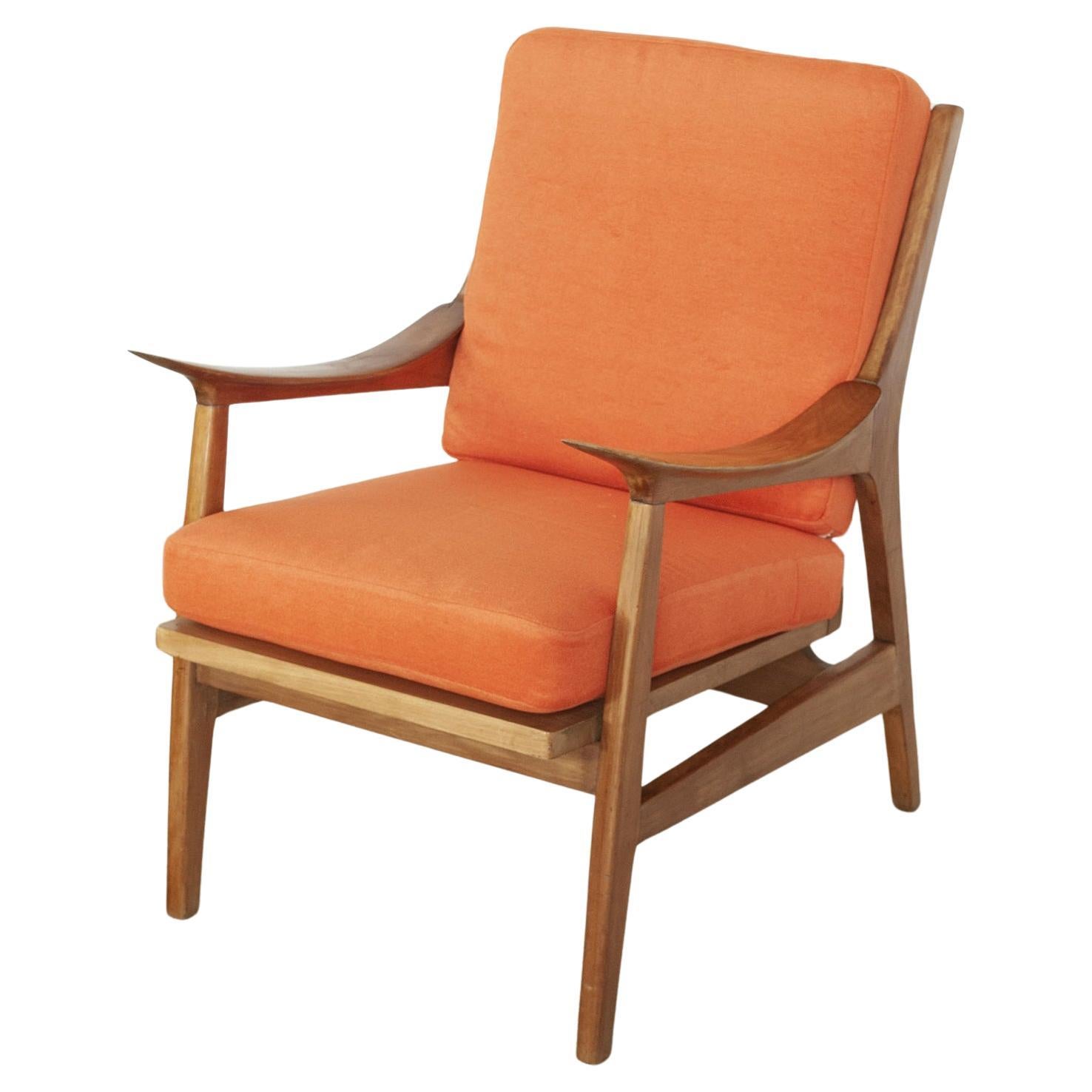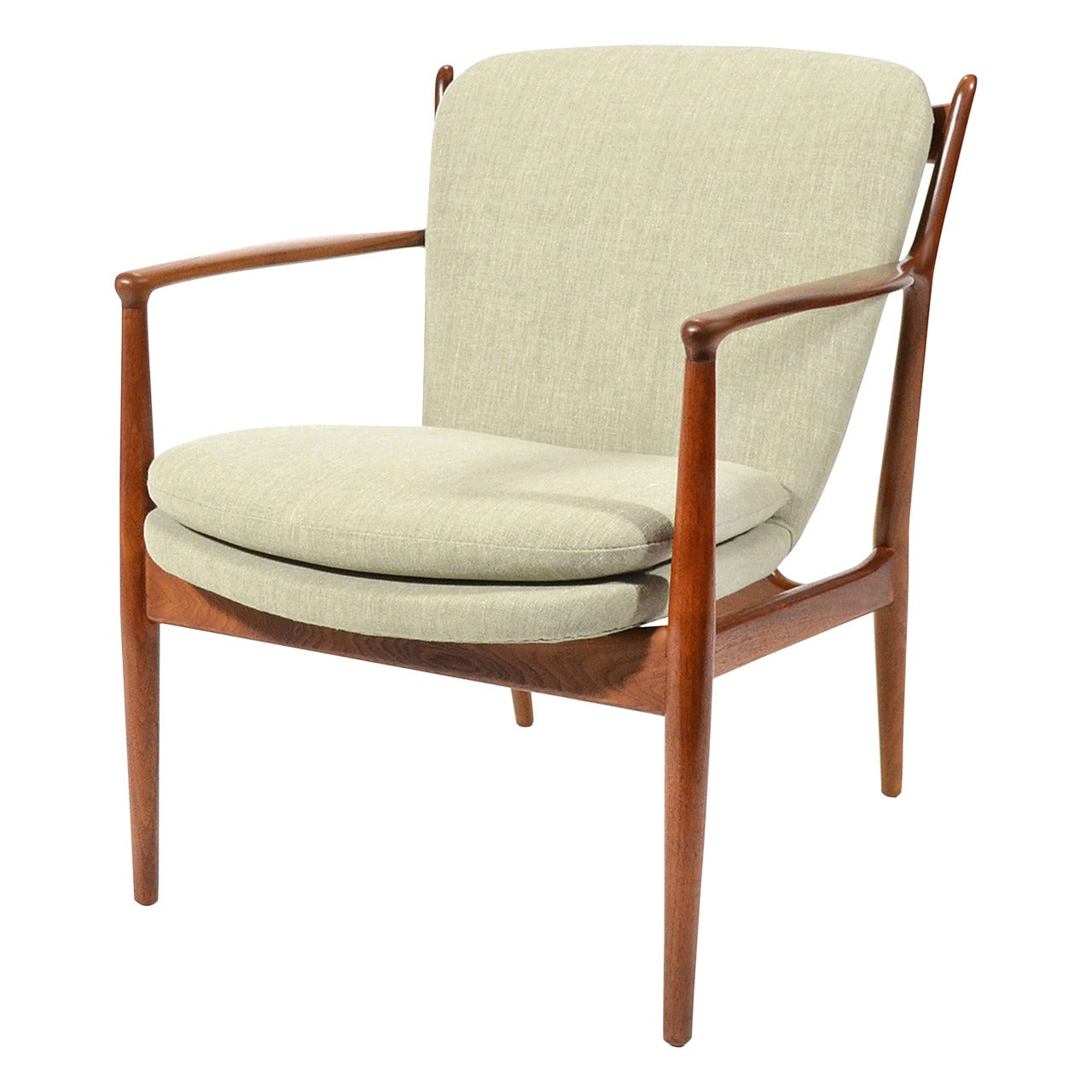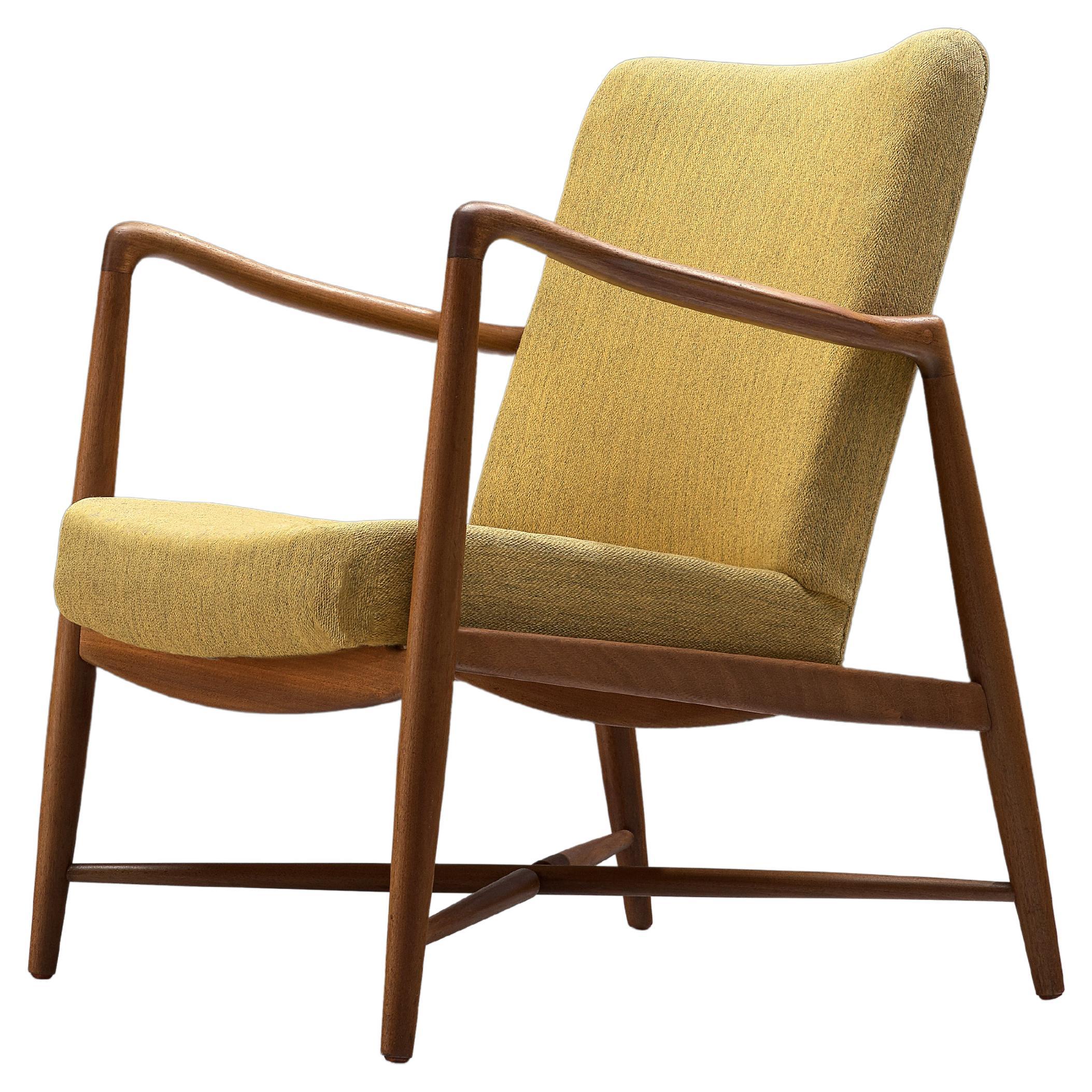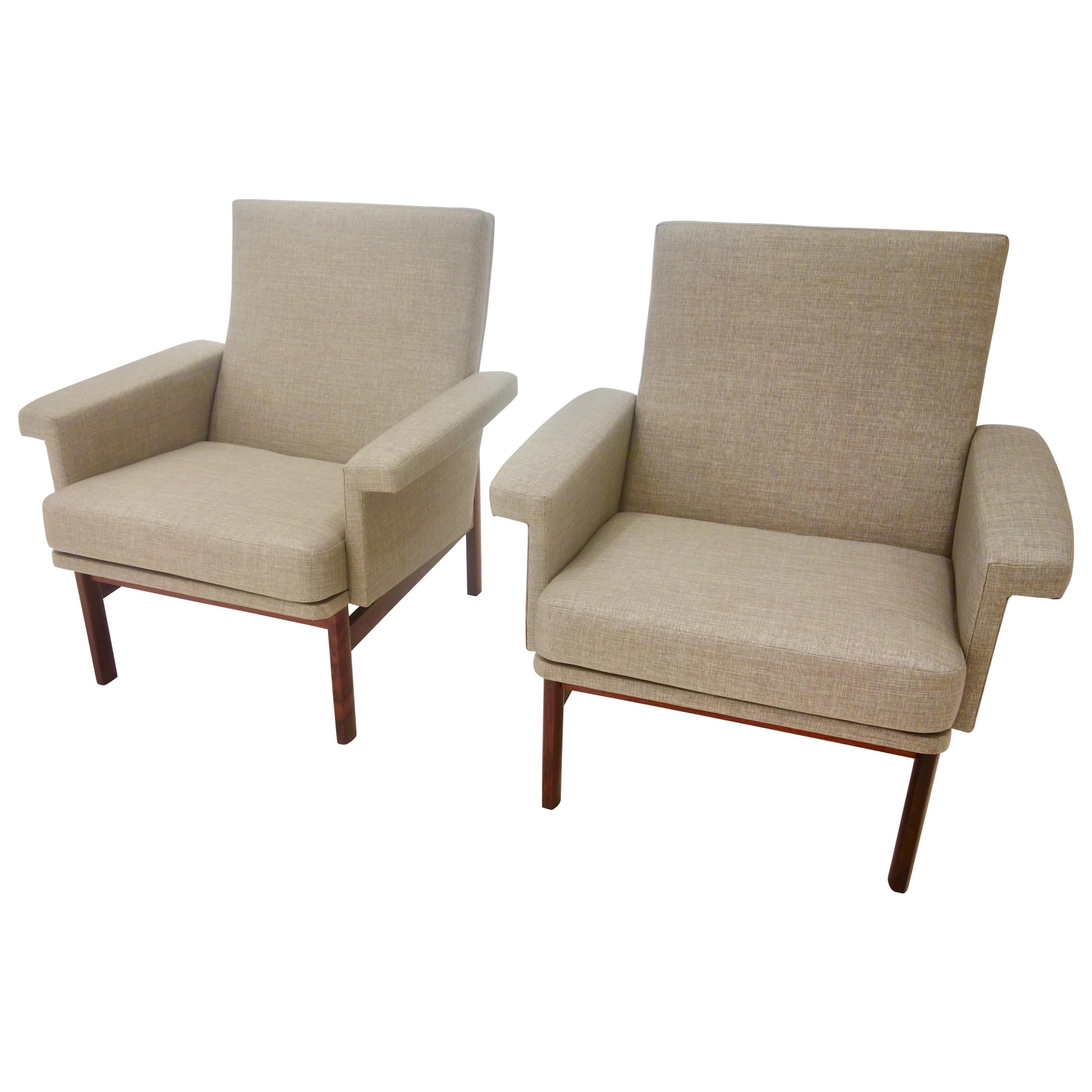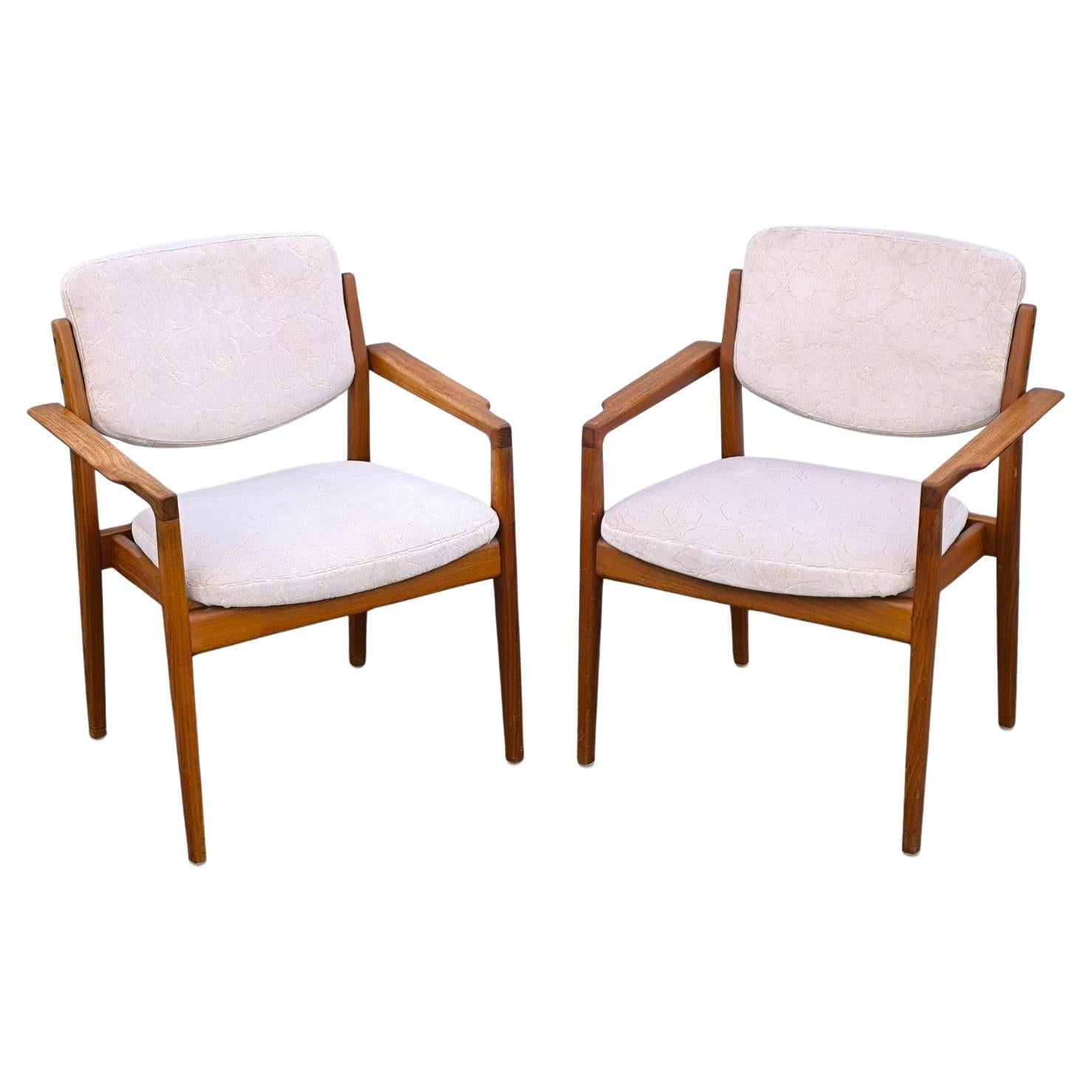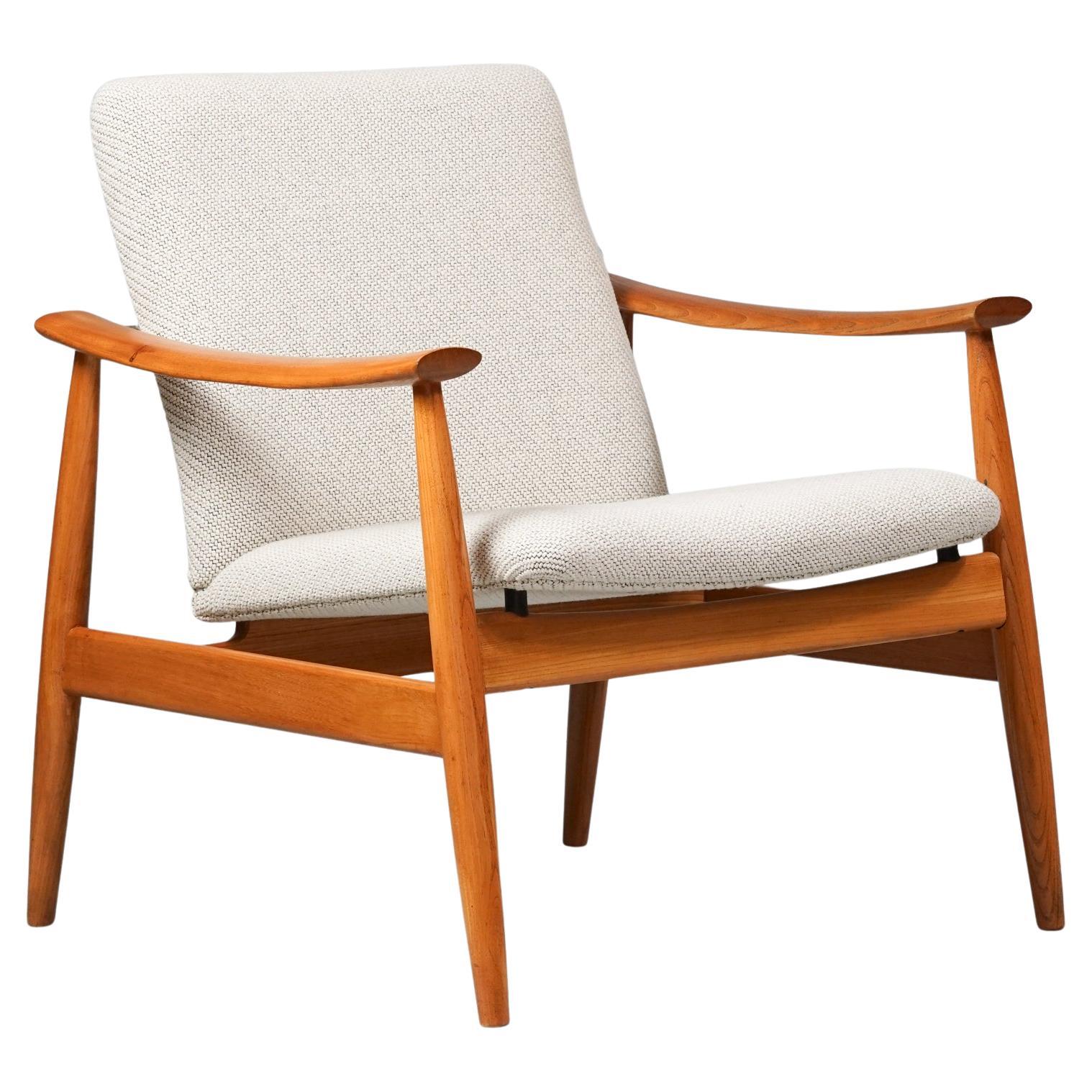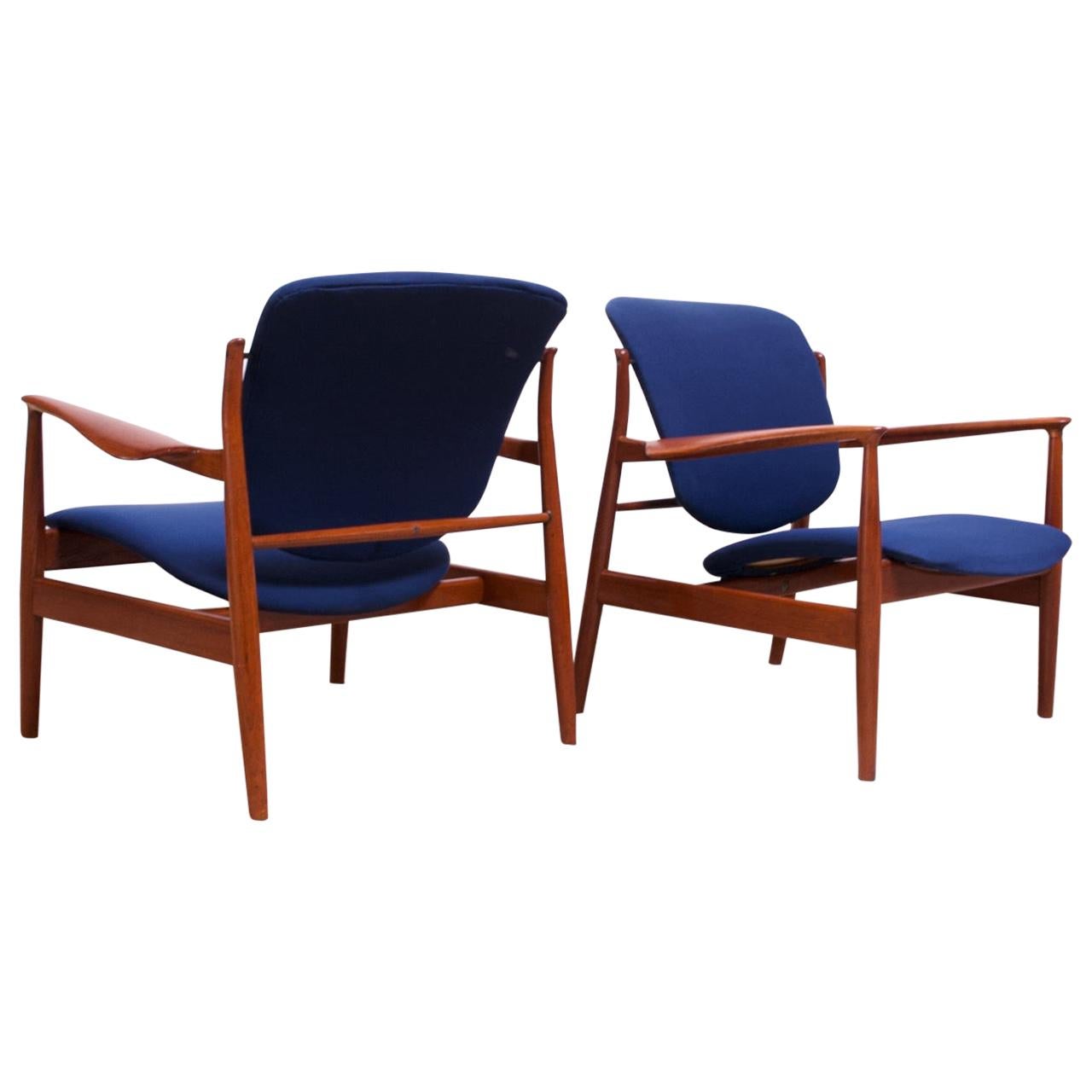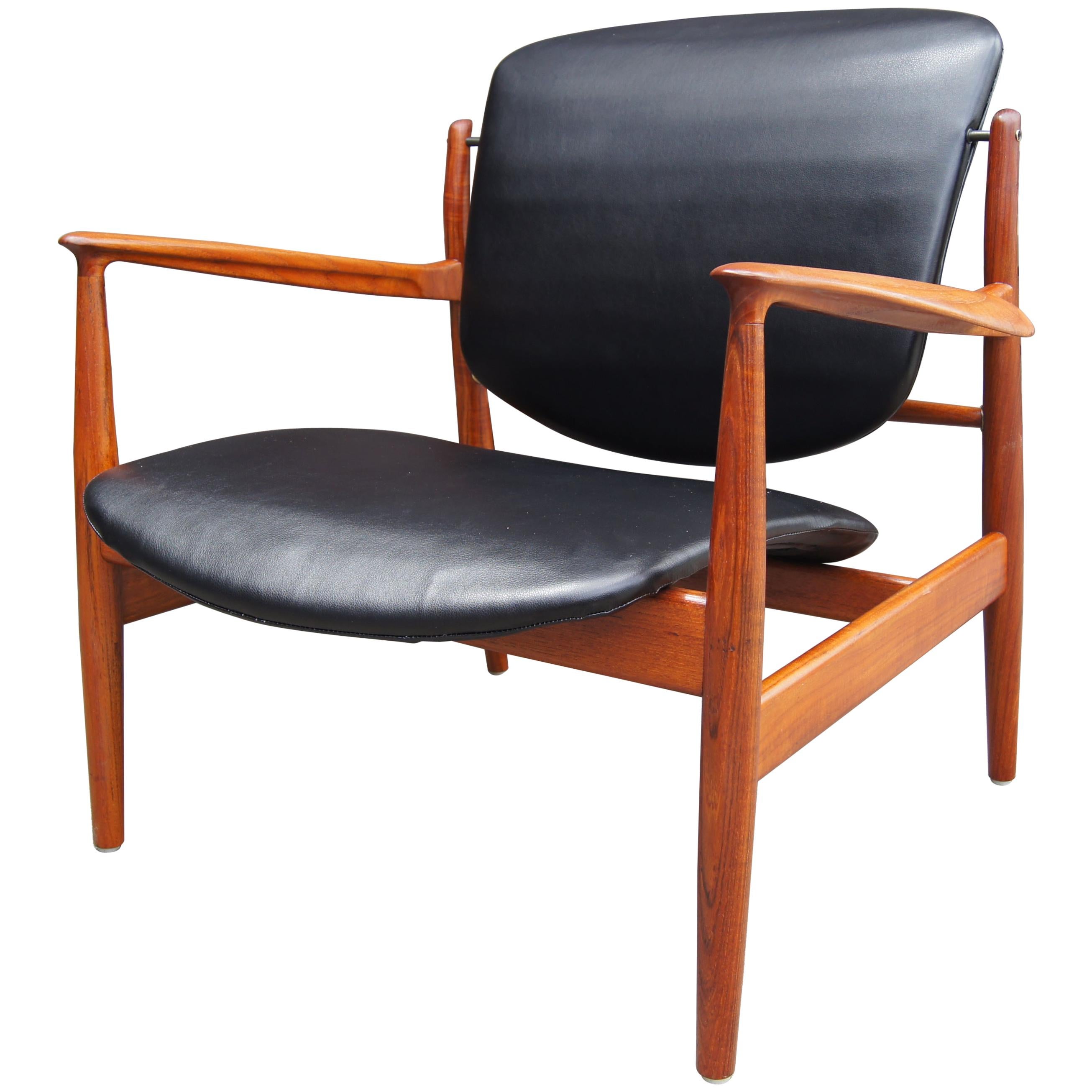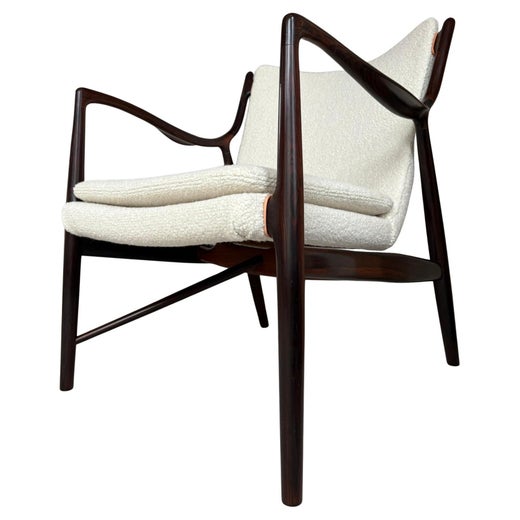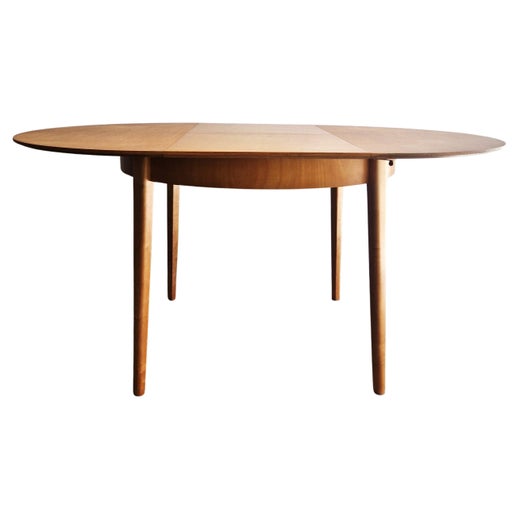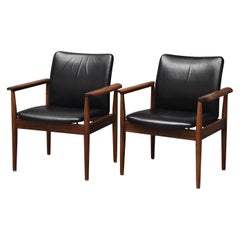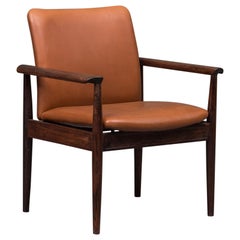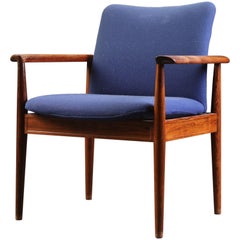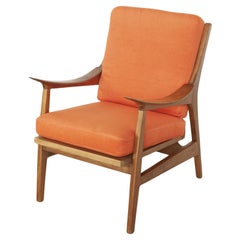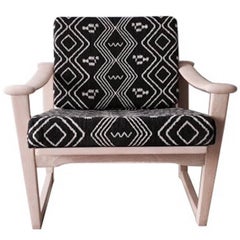
Bohemian armchair, Finn Juhl, M. Nissen for Pastoe, 1960s.
View Similar Items
Bohemian armchair, Finn Juhl, M. Nissen for Pastoe, 1960s.
About the Item
- Creator:
- Dimensions:Height: 26.38 in (67 cm)Width: 27.17 in (69 cm)Depth: 22.45 in (57 cm)
- Style:Bohemian (In the Style Of)
- Materials and Techniques:
- Place of Origin:
- Period:
- Date of Manufacture:1960-1969
- Condition:Wear consistent with age and use.
- Seller Location:Schagen, NL
- Reference Number:1stDibs: LU180734042323
Finn Juhl
Along with Hans Wegner, Arne Jacobsen and Børge Mogensen, Finn Juhl was one of the great masters of mid-20th-century Danish design. Juhl was the first among that group to have his work promoted overseas, bringing the character of the nation’s furnishings — and the inherent principles of grace, craftsmanship and utility on which they were based — to an international audience.
A stylistic maverick, Juhl embraced expressive, free-flowing shapes in chair, credenzas and sofa designs much earlier than his colleagues, yet even his quietest pieces incorporate supple, curving forms that are at once elegant and ergonomic.
As a young man, Juhl hoped to become an art historian, but his father steered him into a more practical course of study in architecture. He began designing furniture in the late 1930s, a discipline in which, despite his education, Juhl was self-taught, and quite proud of the fact.
Juhl’s earliest works, designed in the late 1930s, are perhaps his most idiosyncratic. The influence of modern art is clear in his 1939 Pelican chair: an almost Surrealist take on the classic wing chair. Critics reviled the piece, however; one said it looked like a "tired walrus." Juhl had tempered his creativity by 1945, when the workshop of Danish cabinetmaker Niels Vodder began to issue his designs. Yet Juhl’s now-classic NV 45 armchair still demonstrates panache, with a seat that floats above the chair’s teak frame.
Juhl first exhibited his work in the United States in 1950, championed by Edgar Kaufmann Jr., an influential design critic and scion of America’s most prominent family of modern architecture and design patrons. (Kaufmann’s father commissioned Frank Lloyd Wright’s design of the house “Fallingwater.”)
Juhl quickly won a following for such signature designs as the supremely comfortable Chieftan lounge chair, the Judas table — a piece ornamented with stylish inlaid silver plaquettes — and the biomorphic Baker sofa. After an article authored by Kaufmann on Juhl and his work appeared in the U.S.-based magazine Interiors in 1948, he began receiving American commissions.
Kaufmann commissioned Juhl to create the exhibition design for, and contribute pieces to, the 1951 edition of the Good Design shows he organized for MoMA and Chicago’s Merchandise Mart. Baker Furniture asked Juhl to design for the firm, and he produced a collection of chairs, tables and cabinets, and, later, the 1957 sofa.
Scandinavian modernist seating, such as the chairs and sofas Juhl created for Baker, became immensely popular in postwar America, as the seeds of the Scandinavian style that Juhl sowed took root and spread in the United States. Juhl and his work featured prominently in the landmark show “Design from Scandinavia,” which opened in 1954 at the Virginia Museum of Fine Arts and traveled to 24 museums in the U.S. and Canada; over three years, it was seen by more than a million people.
Juhl’s furniture — as well as his ceramics, tableware and accessories — has an air of relaxed sophistication and elegance that is unique in the realm of mid-century design.
Find vintage Finn Juhl armchairs, coffee tables, desks and other furniture for sale on 1stDibs.
Pastoe
Dutch furniture company UMS Pastoe was established in 1913 by German-Jewish entrepreneur Frits Loeb and became rapidly successful largely owing to its reputation for well-made tables and chairs. Today, however, the brand is best known by collectors for the modular sideboards, storage cabinets and other spare, streamlined case pieces that it produced during the postwar years.
Influential mid-century modernist designer Cees Braakman had been creating furniture since his teenage years when he was promoted to head of design at Pastoe in 1948. The Utrecht-born designer took over for his father, Dirk Braakman, who had by then been managing the company for more than 20 years and had designed a variety of furnishings for the manufacturer by himself. A year before he assumed his new role at Pastoe, Cees visited the United States where he became enamored with the designs of Charles and Ray Eames and the other creative minds associated with legendary American furniture manufacturer Herman Miller.
While many Dutch designers who are now celebrated by vintage furniture collectors — names like Gerrit Rietveld and Friso Kramer are in this list — found inspiration in Piet Mondrian and the country’s De Stijl art movement, they also looked to Scandinavian modernists such as Alvar Aalto and Americans such as the Eameses. Cees Braakman was no different.
Braakman’s 1940s-era tour to the States included a visit to the Herman Miller factory in Zeeland, Michigan. At the time, architect-designer-journalist George Nelson was director of design at the firm and had enlisted a range of designers to collaborate with Herman Miller and create what are now icons of mid-century modernism. Braakman took notice of industrial manufacturing techniques at HM and in particular, the company’s innovations in furniture design owing to experimentation with molded plywood and fiberglass-reinforced plastic.
The Dutch designer introduced the first line of modern furniture at UMS Pastoe thereafter — a table, a chair, a bed and more created in molded plywood and featuring oak veneers, specifically tailored for smaller living spaces. Braakman was convinced that Pastoe should move on from the restrictions that a collection or set of furniture presented to consumers. Furniture for a bedroom, for example, should be practical and built as individual pieces that could be adapted as more space became available. New production methods and creative marketing came into focus under Braakman’s leadership, and his own lines of oak and birch furniture — which were created around cupboards that could be reconfigured as needed, or armchairs that could be combined to form a sofa — earned acclaim and were commercially very successful.
UMS Pastoe was recognized for its innovative furniture at the Milan Triennial in 1957 and Le Signe d’Or in Belgium, and Cees Braakman’s work can today be found at the Stedelijk Museum in Amsterdam. Over the years, designers such as Jan van Grunsven, Radboud Van Beekum and Rob Eckhardt collaborated with UMS Pastoe.
Find vintage UMS Pastoe furniture on 1stDibs.
You May Also Like
Vintage 1960s Danish Scandinavian Modern Armchairs
Leather, Hardwood
Vintage 1960s Danish Scandinavian Modern Armchairs
Leather, Hardwood
Vintage 1960s Danish Scandinavian Modern Armchairs
Hardwood
Vintage 1960s Scandinavian Mid-Century Modern Armchairs
Fabric, Walnut
Vintage 1950s American Scandinavian Modern Lounge Chairs
Teak, Upholstery
Vintage 1950s Danish Scandinavian Modern Armchairs
Fabric, Teak

